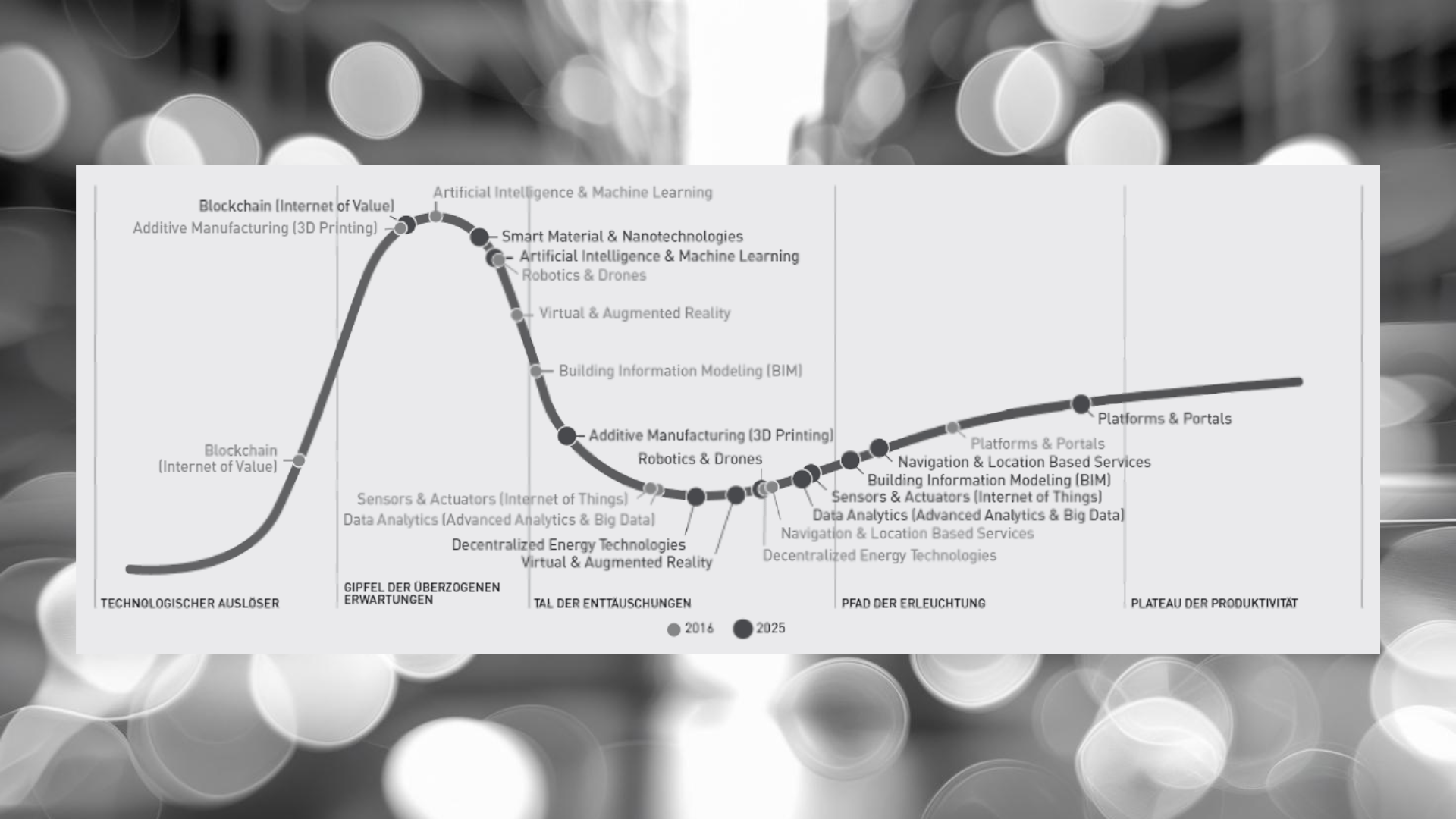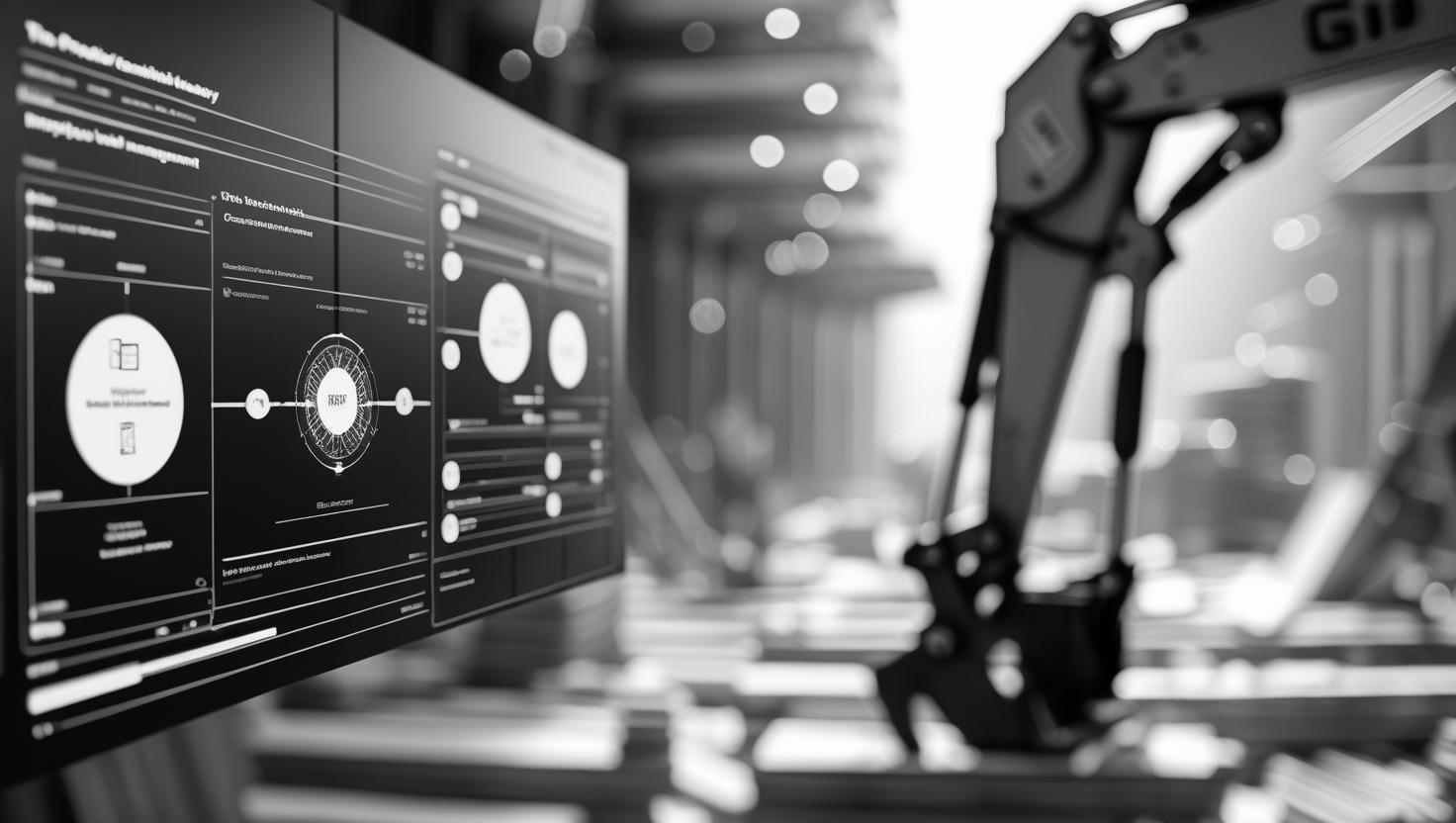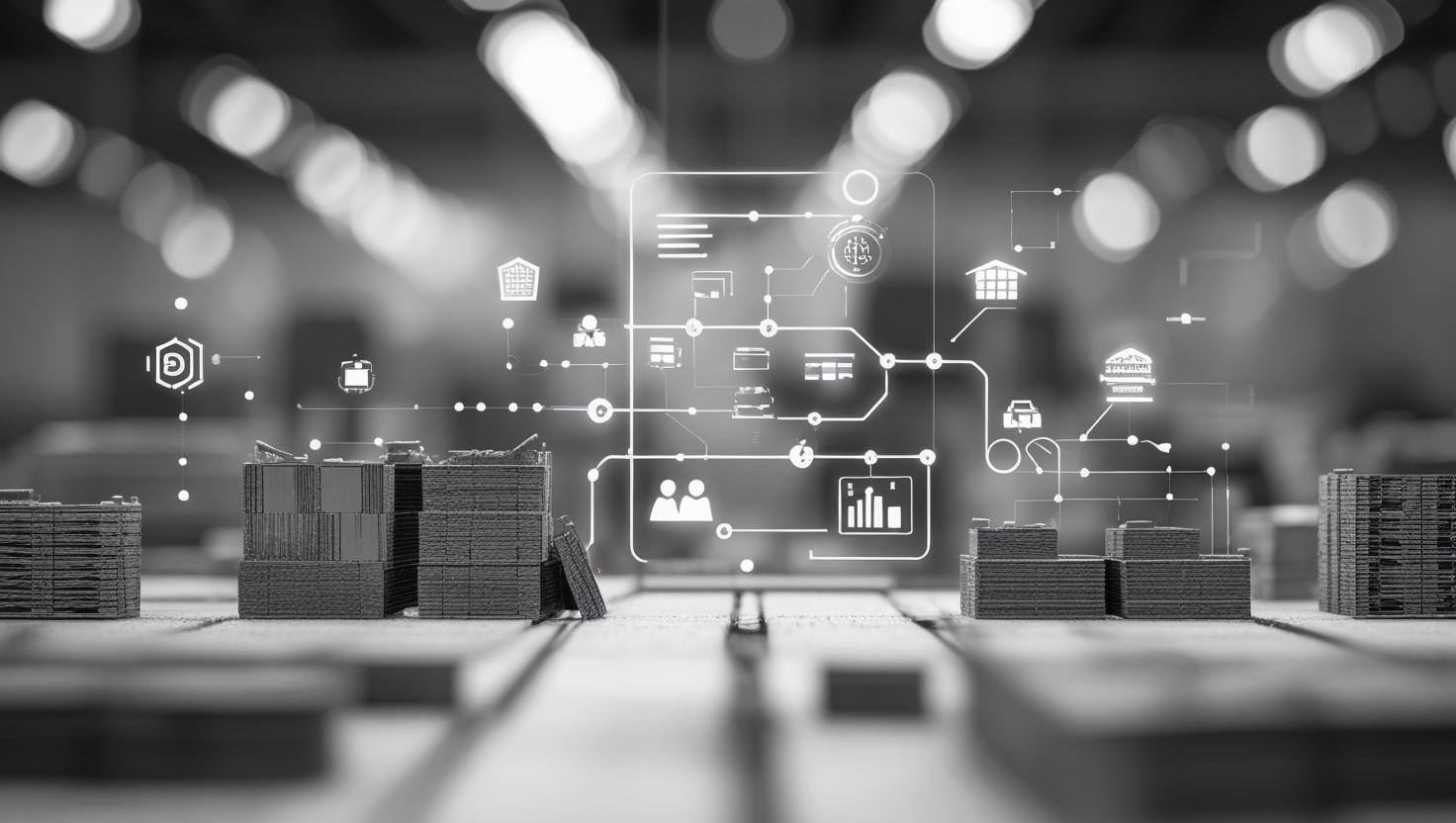Trends in the construction industry: between innovation and investment backlog
by Anton Hulm | June 5th, 2025
The construction industry is increasingly recognizing the enormous potential of digital technologies – and yet there is still a gap between theoretical possibilities and actual practice. While building information modeling (BIM), AI drones and the like have long been available, analogue reality still prevails on many construction sites. Paper plans, manual processes and a lack of digital interfaces still characterize everyday life. Digital tools could not only increase efficiency, but also reduce error rates, shorten construction times and significantly improve collaboration between all parties involved. Isn’t it time to combine tried-and-tested methods with the possibilities of digitalization – to combine the best of both worlds and make the industry fit for the future?
Digitalization in construction - from hype to reality

From laser scanning and the use of artificial intelligence to building information modeling (BIM) – many digital technologies promise enormous progress for the construction and real estate industry. But where are these innovations today on the path from hype to productive application? And how can the digital maturity level of the industry be quantified?
The Gartner Hype Cycle and industry-specific digitalization indices provide an overview. In the following, we look at the current Hype Cycle 2025 with a focus on construction and real estate as well as two key indicators: the Digital Real Estate Index (DRE-i) and the new Digitalization Index Construction (DIB) for Germany. The aim is to present the degree of digitalization in the industry in a tangible and comprehensible way.
The hype cycle illustrates where technologies such as blockchain, AI, BIM, laser scanning, IoT, sensor technology, AR/VR and robotics are currently in the cycle. While some technologies such as BIM are on the way to productive maturity, others such as AI or blockchain are still at the peak of exaggerated expectations. Many are in the so-called valley of disappointment – a critical moment at which it is decided whether market penetration will occur or not.
Changing technologies: Ten years of digital development in the construction and real estate industry

A review of the last ten years, based on the Digital Real Estate Report 2025, shows the following developments:
- Building Information Modeling (BIM) has evolved over the years from a visionary topic to an established technology. Continuously rated as “in use” since 2016, it is now considered the standard for large planning projects. According to the report, the proportion of BIM users is stable at around 70%.
- Artificial intelligence (AI) has only been increasingly discussed in the construction and real estate industry since 2019/2020. Its use has so far been limited to pilot projects and sub-areas such as design optimization or photo documentation analysis. In the 2025 report, AI is again rated as having “high potential”, but still has “low market penetration”.
- Augmented reality (AR)/virtual reality (VR) was on the rise between 2016 and 2019, but was rarely used productively after initial enthusiasm. The 2025 report notes stagnating use and points out that although VR is used for presentations, it does not play a major role in day-to-day business.
- Laser scanning was limited to surveying for a long time. Since 2022, it has been increasingly combined with AI-supported analysis. According to the report, market penetration is “moderately increasing”, particularly due to the availability of inexpensive hardware and cloud-based analysis.
- Blockchain and Web3: According to the Digital Real Estate Report 2025, blockchain and Web3 applications are only marginally relevant in practice compared to other technologies. Although the benefits are recognized in theory – for transparent transactions, secure proof of ownership or automated smart contracts, for example – the corresponding applications are barely represented in actual construction projects. Market penetration remains low and the potential is assessed as “medium”.
These developments are also reflected in the assessments of the experts surveyed in the Digital Real Estate Report 2025.
Reifegrad: Wo stehen wir wirklich?

Despite the multitude of available technologies, the central question is: How far along is the construction and real estate industry really in terms of digitalization? Two informative indices provide well-founded answers to this question.
Digital Real Estate Index (DRE-i)
The DRE-i 2025, compiled by pom+, shows: The average digital maturity level is only 4.0 out of 10 points – a decline on the previous year. Planners, construction companies and investors are particularly affected. Reasons: low investment, lack of change management, insufficient data basis. Only 16% actively use AI, for example. In the view of many respondents, the industry is in the “valley of digital disillusionment”.
Digitization Index Construction (DIB)
The new index from the Federal Institute for Research on Building, Urban Affairs and Spatial Development (BBSR) is intended to measure how digital the German construction industry is each year – differentiated according to technologies, strategies and cultural factors. Comprehensive data is still lacking, but initial pilot analyses show: There is a lot of potential, particularly through targeted investments, better data availability and increased qualification. The DIB therefore supplements the DRE-i with a construction industry-specific perspective.
These indices serve to measure the digital maturity level of the industry and make it tangible – and thus also to identify where potential is hidden and what action is needed.
Between aspiration and implementation: why digital progress is stalling

Although many companies have already introduced technologies, there is often a lack of strategic anchoring and cultural embedding. It is not enough to have tools – they must be used in a value-adding, targeted and process-integrated manner. This requires not only technical know-how, but also the courage to embrace change, clear responsibilities and interdisciplinary collaboration.
In reality, the “digital middle ages” often still prevail: projects run in data silos, software solutions are used in an isolated and uncoordinated manner, information is missing or is collected multiple times. Many have invested – but without a holistic strategy and operational implementation, productivity gains fail to materialize.
There are tried and tested methods that can serve as a bridge: Approaches such as lean construction or IPA (integrated project execution) show how modern, cooperative collaboration along the value chain can work. In practice, these often fail due to a lack of acceptance, unclear allocation of roles and a lack of project understanding among those involved.
Digitalization therefore means more than just introducing technology – it requires a new attitude towards projects and processes. It requires a project culture that focuses on learning, change, transparency and collaboration. This is the only way to translate digital tools into real progress for planning, construction and operation.
From the network: practical solutions for the digital awakening

Digital transformation is not achieved through individual tools, but through holistic solutions – technical, organizational and cultural. Our group of companies – consisting of Building Information Management GLW GmbH, Building Information Cloud GLWG GmbH (thinkBIC) and Scala X GmbH – offers sound support on the way to a digitally networked construction world.
BIM GLW supports companies in the introduction and coordination of Building Information Modeling (BIM) standards and methods. The aim: transparent planning, better communication and early error detection. By strategically anchoring BIM in everyday project work, time and cost risks can be significantly reduced – and quality improved at the same time.
thinkBIC provides modern SaaS solutions in the form of planBIC and goBIC to map documentation and quality assurance in a cloud-based and automated manner. The applications enable traceable construction documentation and consequently simplify communication between various decision-makers.
Scala X digitizes existing buildings using laser scanning, structures the database and supports analysis – an essential prerequisite for ESG reporting, FM or conversion. Precise recording not only enables seamless as-built documentation, but also creates the basis for digital twins.
Together, we not only provide support with technological solutions, but also accompany the cultural change, analyse the degree of digitalization of your company, help with the funding check and create the basis for sustainable digitalization.
Your next step: Experience 360° BAUdigital

If you would like to know what digitization can look like in practice, we cordially invite you to the event „360° BAUdigital – Deine Daten. Deine Zukunft. Dein BIMcamp.“ on July 3rd, 2025 in Nuremberg.
In sessions, panels and interactive formats, experts will show how laser scanning, BIM, AI (drones) and co. can be combined in a meaningful way – for real added value in the construction industry.
Register and help shape the digital transformation. Digital standstill is a thing of the past – now it’s time to build.
Conclusion
The construction and real estate industry is at a decisive turning point: digital technologies such as BIM, AI, laser scanning and AR/VR have long been available – but their potential often remains untapped. The reason is not a lack of tools, but a lack of change: many companies invest in individual solutions without anchoring them strategically or embedding them organizationally and culturally.
Digitalization means more than just introducing software – it requires clear processes, reliable data, new forms of collaboration and the courage to question the status quo. Those who continue to think in silos and maintain analog habits will lose efficiency and competitiveness in the long term.
At the same time, many practical examples show that It can be done! Companies that take a holistic approach to digitalization are already achieving concrete added value – from planning to operation. The decisive factor is the will to change. Now is the time to break old patterns and break new ground. Those who actively shape the transformation not only secure technological advantages, but also create the basis for a sustainable building culture.
Let's shape the digital awakening together. Now is the time to rethink!
Discover our reference projects and find out how our collaboration creates concrete added value – for all decision-makers who want to realize construction projects digitally, sustainably and efficiently.
Do you have your own ideas or approaches? We look forward to new partnerships.